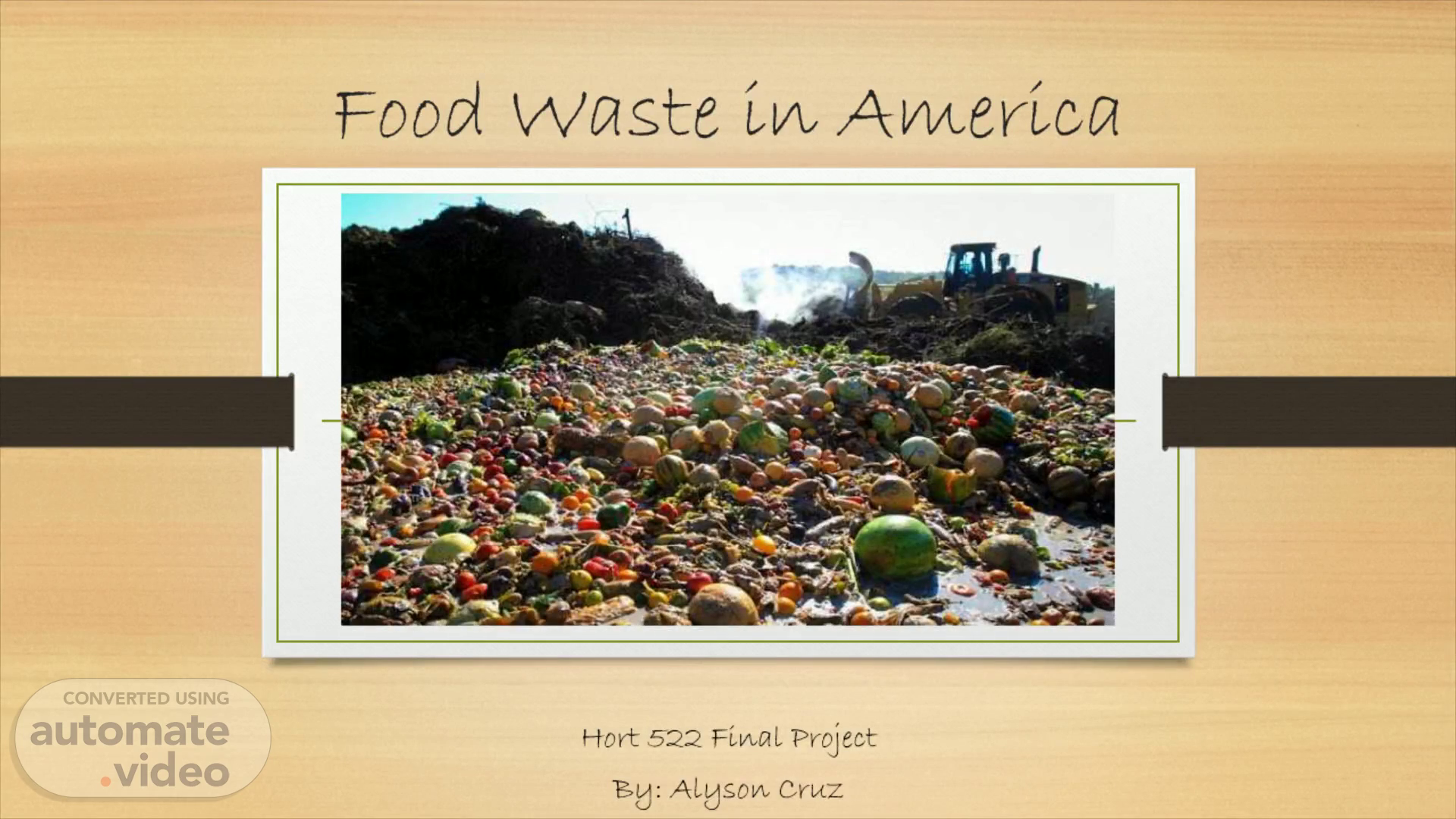
Food Waste in America
Scene 1 (0s)
Food Waste in America. Hort 522 Final Project By: Alyson Cruz.
Scene 2 (8s)
Food Waste. In the U.S., up to 40% of all food produced goes uneaten, and about 95% of discarded food ends up in landfills. The average American wastes 238 pounds of food per year (21 percent of the food they buy), costing them $1,800 per year..
Scene 3 (26s)
During or immediately after harvesting on the farm.
Scene 4 (56s)
Reasons for Food Loss. Food accounts for 24% of solid waste to U.S. landfills, which are the third largest source of human-related methane emissions in the United States . Households are responsible for the largest portion of all food waste About two-thirds of food waste at home is due to food not being used before it goes bad.
Scene 5 (1m 16s)
Reasons for Food Loss. Food spoilage at home occurs due to improper storage, lack of visibility in refrigerators, partially used ingredients and misjudged food needs . The remaining third of household food waste is the result of people cooking or serving too much food. Cooking portions have increased over time, and large meals often include more food than we can finish ..
Scene 6 (1m 36s)
Reasons for Food Loss. An estimated 80 percent of Americans prematurely discard food due to confusion over the meaning of date labels. Research on date labeling from the UK suggests that standardizing food date labeling and clarifying its meaning to the public could reduce household food waste by as much as 20 percent. Without meal plans and shopping lists, consumers often make inaccurate estimates of what and how many ingredients they will use during the week. Planning your meals and creating lists may seem small, but they will have big impacts, especially if everyone makes an effort to make these small changes..
Scene 7 (2m 4s)
Reducing Food Waste. The Environmental Protection Agency provides the “Food Recovery Hierarchy” graphic to explain ways to handle excess food. From the most preferred at the top of the pyramid to the least preferred at the bottom tip..
Scene 8 (2m 28s)
Reducing Food Waste. Most people don't realize how much food they throw away every day, from uneaten leftovers to spoiled produce to parts of fruits and vegetables that could be eaten or repurposed. Reducing this wasted food presents opportunities to increase food security, foster productivity and economic efficiency, promote resource and energy conservation, and address climate change. The Business and Sustainable Development Commission estimates that by 2030 reducing food waste will represent a $155-405 billion economic opportunity ..
Scene 9 (2m 51s)
Reducing Food Waste. Investing $14 billion in cost-effective solutions per year over the next ten years could reduce food waste by 45 million tons for each of those years. This would result in $73 billion in annual net financial benefit for the U.S., reduce greenhouse gas emissions by 75 million metric tons, save four trillion gallons of water, and recover the equivalent of four billion meals for people in need. Over ten years, it would create more than 51,000 jobs, all while achieving the U.S. 2030 reduction goal..
Scene 10 (3m 19s)
Wrapping It Up. Planning your meals and creating lists may seem small, but they will have big impacts, especially if everyone makes an effort to make these small changes. Yes these issues need to be addressed at higher levels. But the research shows that these seemingly small changes have large impacts . What we do in our households have lasting effects and it is important to go through life understanding that we all are all connected and responsible for caring for the earth..